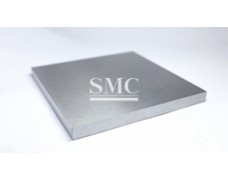
- Unternehmensübersicht Das Herz von Shanghai Metal Vision und Philosophie Partnerschaft Zertifizierungen Unternehmenskultur
- Unser Service Projekt-Design Wartung und Service Herstellung Transformation und Aufrüstung Lagerung und Logistik Verarbeitung und Handel
- Management Unsere Geschichte Globale Verantwortung
- Beschaffungszentrum Praktikum
- Metall Aluminiumprodukte Kupferprodukte Metallisch beschichtete Produkte Edelstahlprodukte Stahlprodukte Sonderlegierung
- Konstruktion Stahlgitter Lagerregal Stahlstruktur Stahlbrücke Gerüstbau Baumaterial Chemische Rohstoffe One Stop Solutions for Projects
- Containers ISO Standard Container Gerätecontainer Lagerbehälter Container Haus Reefer / Isolierbehälter Offshore Container
- Maschinen Formmaschine Andere Maschinen Schneidemaschine Verarbeitungsmaschine Biegemaschine Ziegelmaschine Motor
- Mechanische Produkte Fahrzeugindustrie Verschiedenes Festmacher Schiffsausrüstung Druckbehälter
- Elektrisches System Elektrisches Kabel Automatisierung Machtverteilung Solarenergie System Elektrisches Schutzsystem Transformator Fließband Blitzsystem
- Medizinisches Zubehör Fütterungsprodukte Atemwegsprodukte Pflegeprodukte Injektionsprodukte
- Baumaschinen
- EPC-Projekt
- Erdölleitung
- Wasserleitung
- Gas Leitung
- Boots- und Liegezubehör
- Metall zur Dekoration
- Transformator-Komponenten
- Wärmetauscherrohr
- Klimaanlage Ersatzteile und Zubehör
- Kessel
- Küchen- und Badezimmergerät
- Metall für Haushaltsgeräte
- Solarstromgerät
- Aufzug
- Dach und Decke
- Kabel
- Tank
- Verpackung
- Maschinen und Anlagen Ersatzteile und Zubehör
- Formenwerkzeug
- Autoteile
- Gleis- und Kranbahn
- Hardware-Anpassung
- Schleifmittel
- Straßenbaumaschinen
- Elektronische Bauteile
- Bau- und Ausbaumaterialien
- Türen und Fenster
- Kühlschränke
- Pressemitteilung Nachrichten aus der Metallindustrie Nachrichten von Maschinen und Anlagen Nachrichten von Bau und Gebäude Nachrichten von mechanischen Produkten Nachrichten von Containern Nachrichten von Elektrik System Nachrichten von medizinischem Zubehör
- Medienbibliothek Videos Bilder Folgen Sie den sozialen Medien in Shanghai
Expansion Alloy
Note: 4J29 4J44
Standard: YB / T 5231-2005
Grade: 4J29 4J44
Standard: YB/T 5231-2005
Eine Präzisionslegierung mit anomalen thermischen Ausdehnungseigenschaften, auch bekannt als Wärmeausdehnungslegierung, wird in der
Elektronikindustrie, Präzisionsmessinstrumenten, Präzisionsinstrumenten und Tieftemperaturtechnik weit verbreitet verwendet. Ausdehnungslegierungen
werden in Legierungen mit geringer Ausdehnung und in Legierungen mit fester Ausdehnung unterteilt, die auch als Dichtungsverbindungen bekannt sind.
Ausdehnungslegierungen umfassen hauptsächlich Fe-Ni, Fe-Ni-Co und Fe-Ni-Cr-Legierungen. Zusätzlich zu einem spezifischen Wärmeausdehnungskoeffizienten erfordert
die expandierte Legierung auch gute Dichtungseigenschaften, Schweißbarkeit, Korrosionsbeständigkeit, Bearbeitbarkeit und freie Bearbeitungseigenschaften
in Abhängigkeit von der Anwendung und erlaubt nicht, dass die Ausdehnungseigenschaften innerhalb des Einsatztemperaturbereichs verursacht werden .
Offensichtlich geänderte Phasenänderung. Die Expansionslegierung muss die chemische Zusammensetzung der Legierung während des Herstellungsprozesses genau steuern.
Seine Produkte sind in der Regel Stäbe, Platten, Bänder, Drähte und Rohre.
A precision alloy with abnormal thermal expansion properties, also known as thermal expansion alloy, is widely used in the electronics industry, precision measuring instruments, precision instruments, and cryogenic engineering. Expansion alloys are divided into low-expansion alloys and fixed-expanded alloys, which are also known as sealing joints. Expansion alloys mainly include Fe-Ni, Fe-Ni-Co and Fe-Ni-Cr alloys. In addition to a specific thermal expansion coefficient, the expanded alloy also requires good sealing properties, weldability, corrosion resistance, workability, and free-machining properties depending on the application, and does not allow the expansion characteristics to be caused within the use temperature range. Obviously changed phase change. The expansion alloy must accurately control the chemical composition of the alloy during the manufacturing process. Its products are generally bars, plates, strips, wires and pipes.
1. KOVAR | ASTM F15 | K94610 | NiloK | FeNi29Co17
Note: 4J29 4J44
Standard: YB / T 5231-2005
Anwendung:
1.Kovar Legierung wurde für hermetische Dichtungen mit den härteren Pyrex-Gläser und Keramikmaterialien verwendet.
2. Diese Legierung hat eine breite Anwendung in Leistungsröhren, Mikrowellenröhren, Transistoren und Dioden gefunden. In integrierten Schaltungen wurde es für das Flat Pack und das Dual-in-Line-Paket verwendet.
1.KOVAR|ASTM F15|K94610|Nilo K |FeNi29Co17
Grade: 4J29 4J44
Standard: YB/T 5231-2005
Application:
1.Kovar alloy has been used for making hermetic seals with the harder Pyrex glasses and ceramic materials.
2.This alloy has found wide application in power tubes, microwave tubes, transistors and diodes. In intergrated circuits, it has been used for the flat pack and the dual-in-line package.
1) .Alloy Sorten und chemische Zusammensetzung im Einklang mit den Bestimmungen
1).Alloy grades and chemical composition consistent with the provisions

2) .Alloy durchschnittliche lineare Expansionskoeffizient in Zeile
2).Alloy average linear expansion coefficient in line

2.Ceramvar Legierung
Klasse: 4J33,4J34 (YB / T5234-1993)
Standard: ASTM F1466, (Fe-Ni27-Co25), Chinesisch 4J33 / 4J34
2.Ceramvar alloy
Grade: 4J33、4J34(YB/T5234-1993)
Standard : ASTM F1466, (Fe-Ni27-Co25), Chinese 4J33/4J34
1)Relative Note:
1)Relative Grade:

2)Klasse und chemische Zusammensetzung
2)Grade & Chemical Composition

Anmerkungen:
1. Unter der Voraussetzung, dass der Durchschnittskoeffizient der Längenausdehnung den Anforderungen der Norm entspricht, darf der Gehalt an Nickel und Kobalt von dem angegebenen Bereich abweichen.
2. Die Form und Abmessungen der Legierungen sind in Übereinstimmung mit GB / T14985.
Notes:
1.Under condition that the average coefficient of the linear expansion meets the requirements of the standard, the content of nickel and cobalt are allowed to deviate from the stated range.
2.The shape and dimensions of the alloys are in compliance with GB/T14985.
3) durchschnittlicher linearer Ausdehnungskoeffizient der Legierung in Linie
3)Alloy average linear expansion coefficient in line

Legierung 3.Invar, ASTM F1684, UNS k93600 (FeNi36), Chinese 4J36
Beschreibung:
Eine Nickel-Eisen-Legierung mit geringer Ausdehnung, die 36% Nickel enthält. Es behält nahezu konstante Abmessungen im Bereich der normalen atmosphärischen Temperaturen bei und weist einen niedrigen Ausdehnungskoeffizienten von kryogenen Temperaturen bis etwa + 500 ° C auf. Nilo 36 behält auch gute Festigkeit und Zähigkeit bei kryogenen Temperaturen.
Zu den Anwendungen gehören Längenstandards, Thermostatstäbe, Laserkomponenten sowie Tanks und Rohrleitungen für die Lagerung und den Transport von Flüssiggasen.
3.Invar alloy,ASTM F1684,UNS k93600 (FeNi36),Chinese 4J36
Decribetion:
A Nickel-Iron, low expansion alloy containing 36% Nickel. It maintains nearly constant dimensions over the range of normal atmospheric temperatures and has a low coefficient of expansion from cryogenic temperatures to about +500°C. Nilo 36 also retains good strength and toughness at cryogenic temperatures.
Applications include standards of length, thermostat rods, laser components and tanks and piping for the storage and transportation of liquefied gasses.
1) .Relative Note:
1).Relative Grade:

2) .Grade & Chemische Zusammensetzung
2).Grade & Chemical Composition

3.Alloy durchschnittliche lineare Expansionskoeffizient in Zeile
3.Alloy average linear expansion coefficient in line

HIER
FÜR
PREIS
We will contact with you within 8 hours













